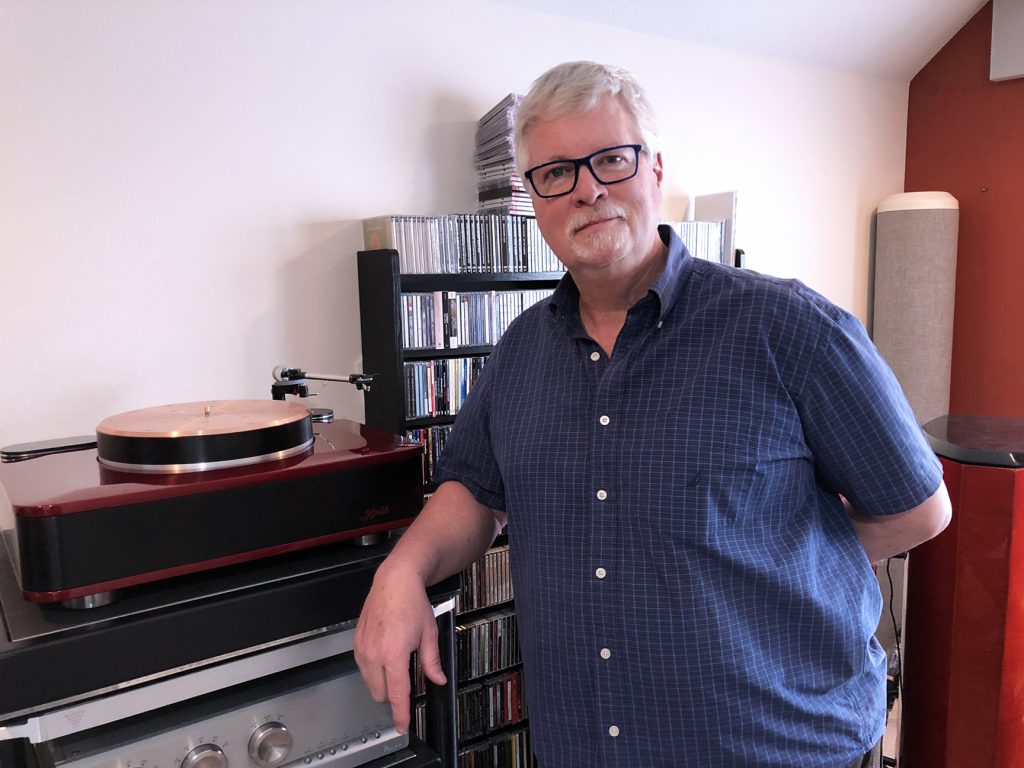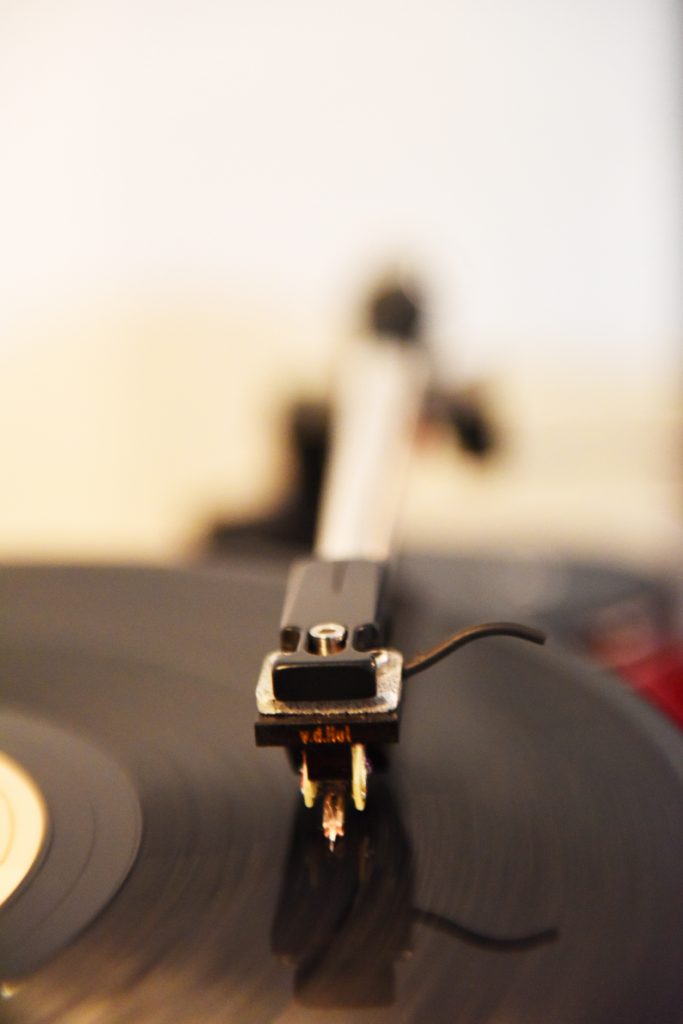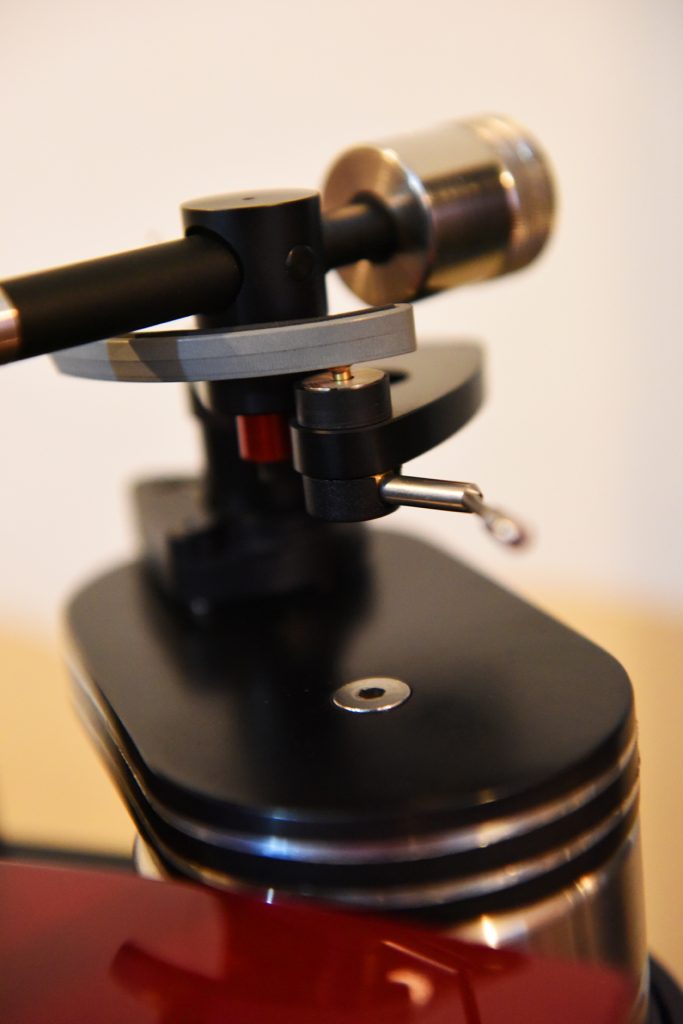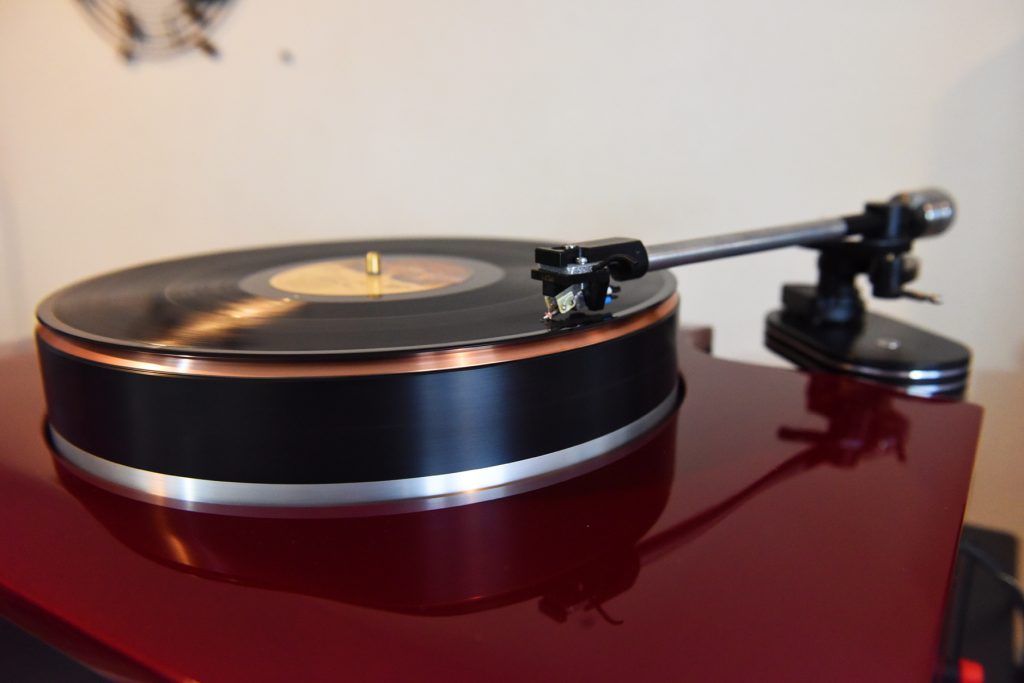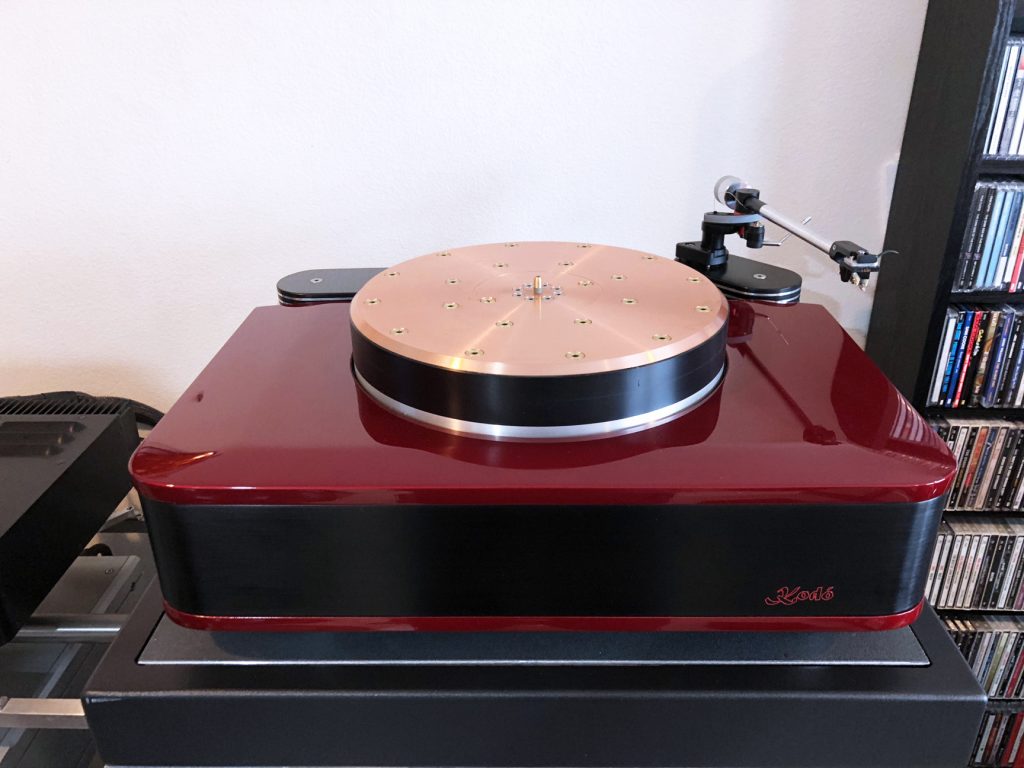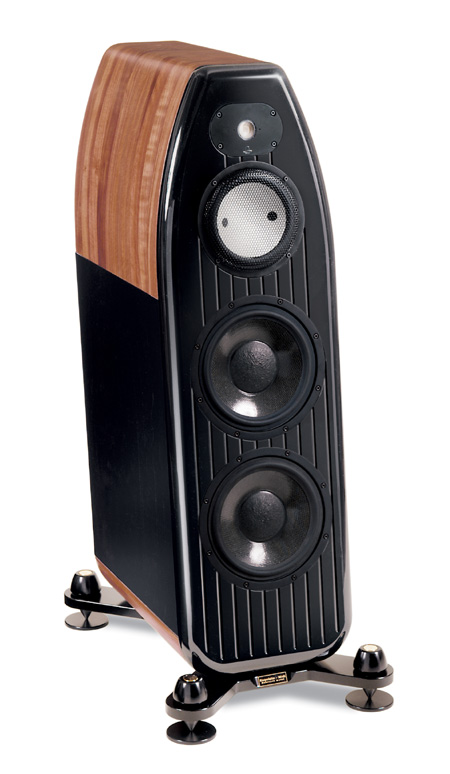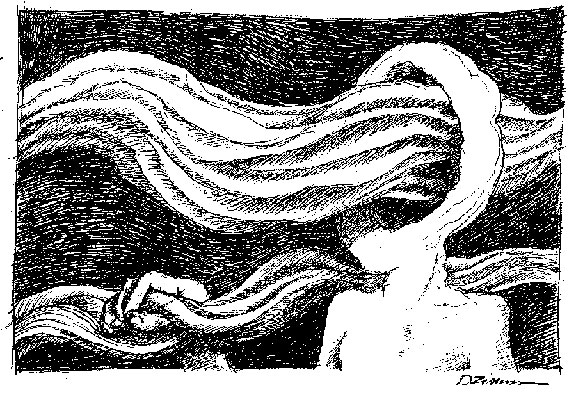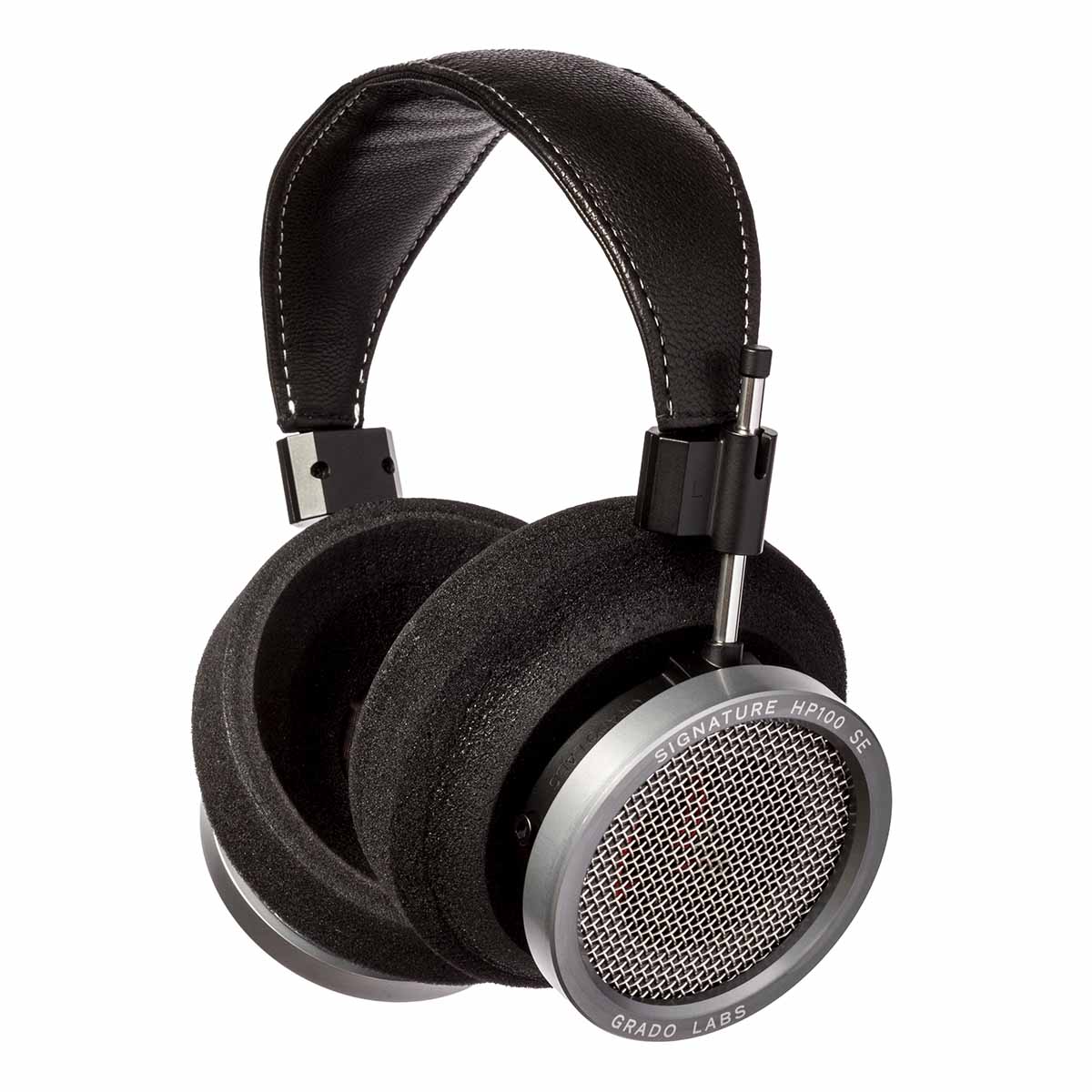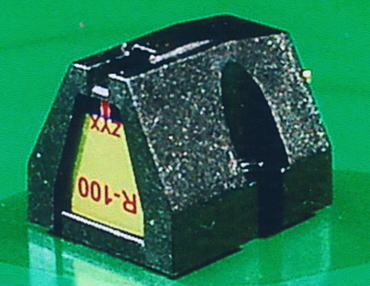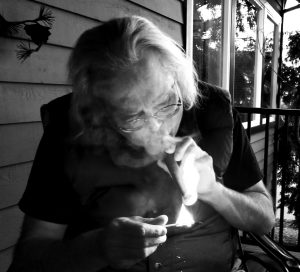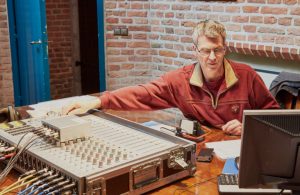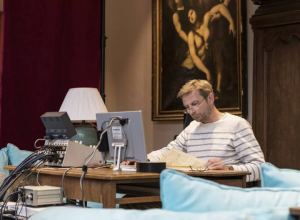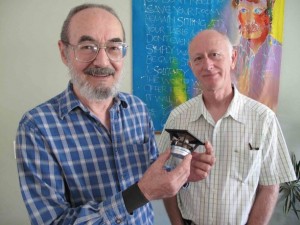Steve Dobbins of Xact Audio and Dr. David W. Robinson
I asked Steve Dobbins to give the background story of the design of the remarkable Schröder LT tonearm for his The Beat reference turntable, which I have reviewed elsewhere in this issue. He sent along the following comments for your benefit.
Dr. David W. Robinson, Ye Olde Editor
I've been fortunate to know Frank Schröder since the early 2000s. We were both part of a group of music fans that got together once a year in Miami to compare new and prototype audio gear.
During that time, the search for a proper tonearm to compliment my upcoming direct-drive turntable, The Beat, was becoming a dead-end quest. I had talked to Frank about this, but he was busy with building his own tonearms and designing the TA-1 for Artemus Labs. Several other tonearm manufacturers were contacted and asked to build a custom arm for us. Two agreed. One European company made a linear tracker but it came years too late, was too complicated, and too pricey. The other sent a blueprint of an arm resembling something out of a Salvador Dali painting. Others just weren't interested for various reasons. I don't blame them!
Fast forward to a Friday night in 2010 after a long day at RMAF. At Garcia's I cornered Frank Schröder about designing the arm I wanted for The Beat TT. It was late, and I suspect Frank had had one too many Berliner weisse. In any case, he agreed, so I commissioned him to design my new tonearm, which became the LT (for “Linear Tracking”). He had carte blanche, but I did ask that it be the best tonearm ever made. Best bass. Most uncolored. No moving or rotating headshell. No air pump. The arm had to stay set after setup, and be able to accommodate most cartridges.
Simple, right?
Not exactly.
I can still see Frank rolling his eyes. He is such a good sport.
A tonearm's job appears to be easy at first glance. The fact is, it is quite complicated if optimal performance is desired. One priority is to give the cartridge the most stable platform possible. In theory, the stylus/cantilever, not the body, should do all the moving, and react only from the groove modulations. The cartridge should be mounted to a headshell that is unaffected by the cartridge's activity. This will allow the stylus to measure the record grooves in the most accurate manner. But the cartridge/arm also needs the ability to move to allow for non-concentric records, as well as warps. And, from stylus to pivot, the entire assembly needs exceptionally high torsional rigidity. But, the stiffer the wand material, generally, the easier it is for the energy/vibrations to be transferred back and forth to the other end. This is far from ideal.
So the list of tonearm requirements is long. There seems no end to the compromises needed for a tonearm to function in the real world. Good thing we like a challenge!
A couple of days after RMAF 2010 ended, Frank, I, and others were at a friend's place in Colorado decompressing. I could tell he had been thinking about this new arm by the number of ideas he had floating around his head. He would draw some ideas out on anything handy. There is a Big City Burrito wrapper somewhere with a FS drawing on it. I heard it sold on eBay.
Some ideas were too close to current or vintage arms. Others would be too complex to realistically build. After some time and thought, Frank started to zero in on a motorized carriage system. At first, I liked it. Then, thinking about the complexity and the problems mounting it to most plinths, interest waned. Simple is good. The final blow to the carriage design for us was that Frank found an expired patent that vaguely mirrored his ideas, but was close enough we did not want anyone to think we copied anyone else's design or design philosophy.
Back to the drawing board that is Frank's brain. Designing a passive pivoted linear tracking arm presents many hills and Alps to climb. Getting bearings with fanatically high levels of precision, low stiction, microscopic amounts of lash, and rotational consistency was a huge challenge. The correct guide rail arc/armwand length for zero tracking error that would still allow for self-propulsion across the record were some of the many obstacles. Headshell material was critical. There were many more challenges, but all were eventually solved. Most rather simply, I might add.
After all of the starts and stops, the final prototype was played in early 2012, and the patent application was filed that October. I received my first pre-production LT later that year, and played it for hundreds of hours before we showed it the first time at RMAF 2013. Jonathan Valin gave our room a best-of-show-contender shout-out that year. We were pleased with the results, to say the least.
Frank was so impressed with the sonic performance that he insisted on selling the LT in Europe and having his name on it.
Frank still oversees the CNC-machined metal body and some of the other parts manufacturing in Europe. He made and supplied the early LT wood arm wands. I machine the rest of the parts and assemble the wire harnesses (Frank's design) in my shop. Only high-purity copper or silver wire that Frank has manufactured in Germany is used. For arms I build, the bearings and wire harnesses are cryo-treated. The bearings are run in prior to arm assembly, and the wires are burned in before shipment. The LT assembly and testing are done in my shop as well. Every LT is mounted and played for at least 10 hours prior to shipping. I accompany the LT and coach the new owner on proper setup for maximum sonic performance.
Development has continued on the LT. My nature is to find ways to improve everything I manufacture. I love R&D. Given the brilliance of Frank's design, trying to increase performance wasn't going to be easy. The area I felt might yield sonic improvement was in materials selection. A year was spent on and off listening to different metal arm wands. Some showed real promise, but at the time all had some sonic trade-offs.
I was ready to move on to another area when Jonathan Carr of Lyra suggested magnesium. I had tried every arm wand material I knew used by other manufactures, vintage and current, except Magnesium (Mg). Mg was written off initially because of what I heard from one current arm and several vintage arms that use it in their armwands. They have a definite coloration in the lower mids/upper bass. Turns out these companies used cast Mg. For manufacturing reasons, this is a safe choice. Look up what happens when you catch a spark to 99% pure Mg shavings from a lathe. It would take a wheelbarrow of sand to stop the white hot fire. Cast metals tend to be very porous. This is not optimal for an armwand because of energy transfer and loss of rigidity.
I learned the safety regimen, and machined my first tapered Mg LT armwand in 2014 using forged magnesium. A Teflon liner is used to support and dampen the wires. Even with the original damping formula, there was great improvement in every area, verified with more than a dozen field tests in customer systems. The negative that some of us heard on a few songs was a slight harshness in the highest piano notes. With a complete change to the internal damping material, that was 100% eliminated. By most, if not all, customer results, there is a complete improvement from top to bottom with the Mg armwand, with zero trade-offs from the wood armwand. The Mg version of the LT is only available from Xact Audio.
Allow me to mention one of the reasons the LT sounds so natural and powerful at the same time.
Sure, the zero tracking error across the entire record helps. That the dual pivot system allows for no direct path for the energy to travel from cartridge to arm board and vice versa is an even bigger reason for the realistic sound. The torsional rigidity of the magnesium armwand pays huge dividends. But the main reason this arm can extract such subtleties and deliver strong and controlled bass is that essentially there is no lateral loading of the stylus/cantilever/suspension. No other arm that I am aware of can make this claim.
Think about it: When there is no lateral load to overcome, each time the stylus needs to react to a record groove, the stylus—and thus the generator—can react much quicker, and deliver a more accurate measurement of the grooves. Attack is very real. Bass is stronger. Textures come alive. It is so easy to hear...and feel.
As a result of the journey briefly described above, the Schröder Mg LT is shackled with fewer compromises, which uniquely results in essentially zero tracking error and zero lateral stylus loading. It needs no anti-skate. It will accommodate most cartridges with optional cartridge mounting plates of various weights. The result is a finely tuned instrument engineered to retrieve what has been buried deep into our records.
All photographs and image processing by David W. Robinson




